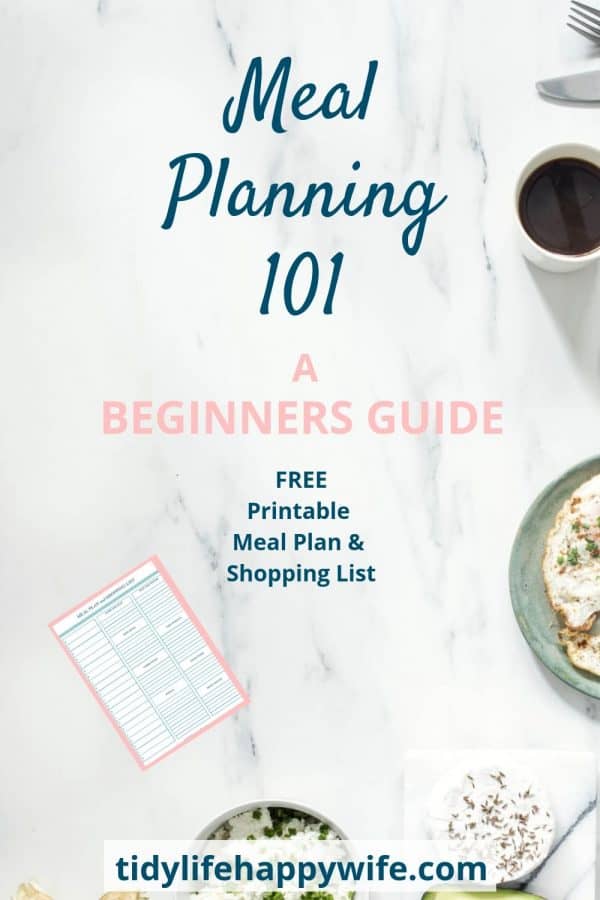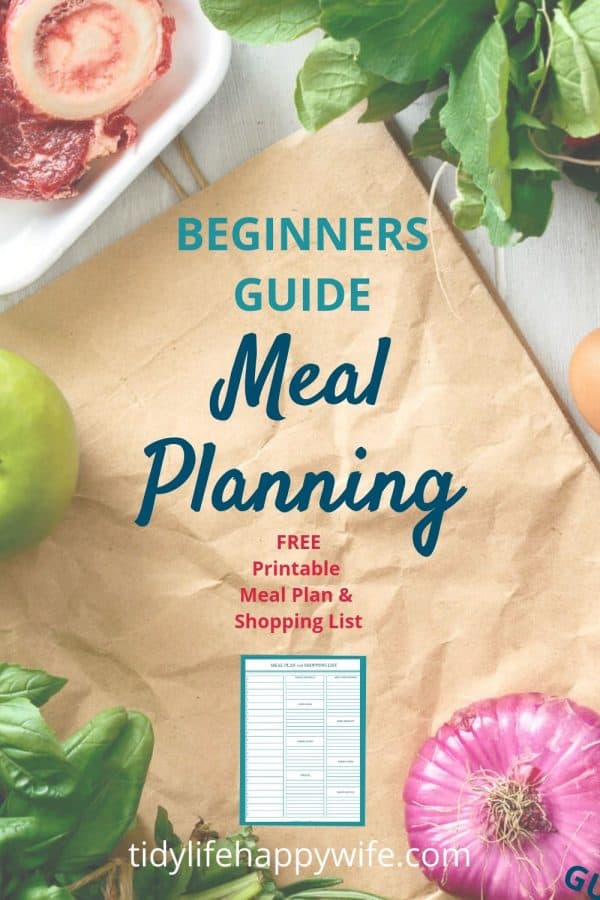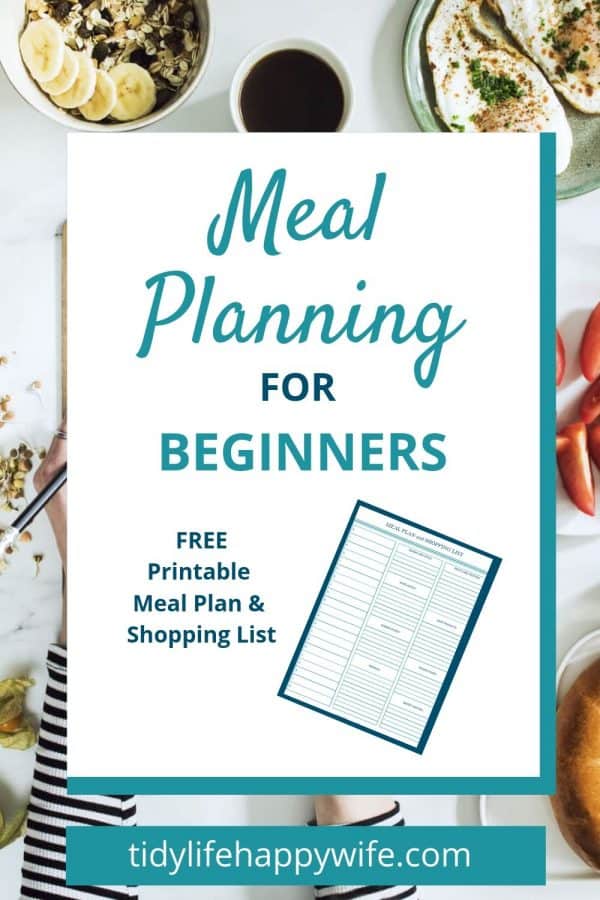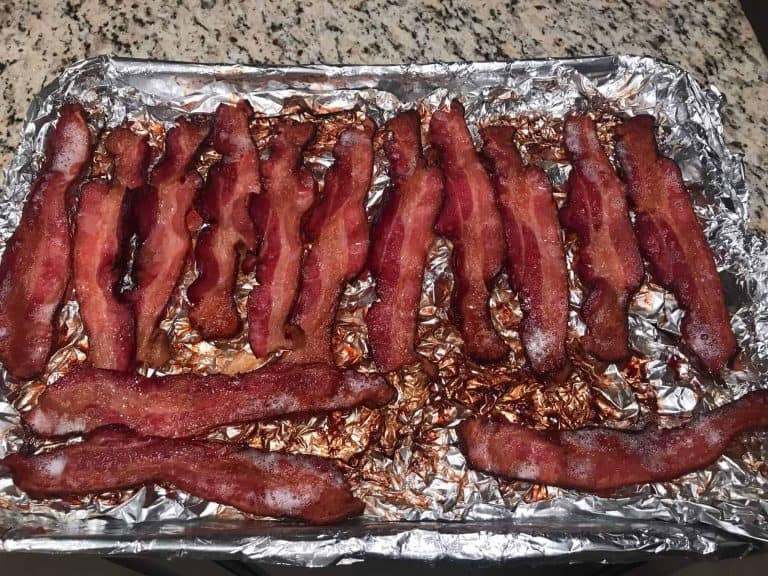The Easy Meal Planning Tutorial that Makes a Beginner Look Like a Pro
Meal planning has the potential to change your life by saving you time, money, and frustration. Can’t quite figure it all out? Try this easy meal planning tutorial for beginners.
You’ve Tried
You’ve tried it before but it never really worked out.
You planned every meal for the entire month and bought all of your groceries. You’ve read other meal planning tutorial, you even freed up some time to prep most of the ingredients. But life happened.
Tuesday turned into a twelve-hour day and you barely had time to boil the Lasagna noodles let alone get the rest of it together. Thursday was filled with after-work activities and there was no way you had time to chop all of the ingredients for the Cobb Salads.
By Friday afternoon, all you could think about was a good glass of Bourbon and a greasy burger (oh wait, maybe that’s me). As a result, the groceries ended up just sitting in the fridge and everything turned out to be a big waste of time and money.
Now you’re overwhelmed and you feel like this meal planning thing is just too complicated for you.
Please don’t give up just yet, you can do this. You’re exactly the type of woman that can reap huge benefits from an easy meal planning tutorial that can help you establish a new routine.
You just need to get off to the right start and build a system that works for you. Try this step by step easy meal planning tutorial for beginners to get you started.

This post may contain affiliate links. Please see my disclosure policy for details.
Easy Meal Planning Tutorial for Beginners – A Step by Step Guide
Just like any other skill, system, or routine, you need to lay the foundation before you can succeed at anything.
You need to know what decisions to make, how to make them, and what to do with them once you’ve made them.
It sounds difficult and complicated but it really isn’t. Once you establish a system and settle into a routine, the whole process will become a simple habit.
Here’s a list of the steps with a more thorough explanation below.
- Choose which meals to plan
- Pick your frequency
- Know your schedule
- List what you have on hand
- Get recipes or list of favorite meals
- Plan your menu
- Write your grocery list
- Do your grocery shopping
- Prep as much as possible
GET YOUR CLEANING DONE DURING THE WEEK!
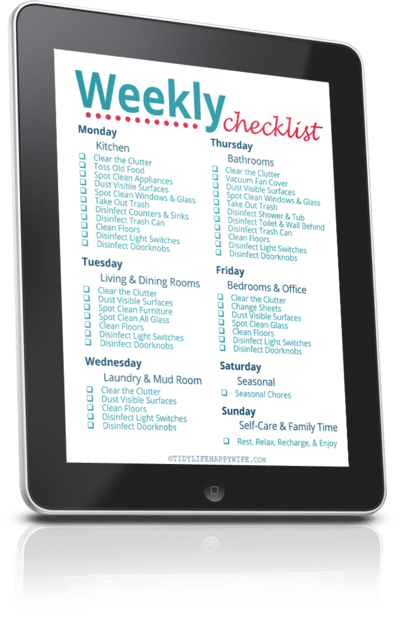
Join thousands of VIPs for cleaning, decluttering, and organizing tips sent straight to your inbox. As a welcome gift, we’ll send you this FREE printable Weekly Cleaning Checklist that lists exactly what to deep clean in every room of your home.
1. Choose Which Meals To Plan
Some people plan every single bite they eat each day while others plan only the main meal of the day.
This easy meal planning tutorial doesn’t dictate which meals you plan, and since it’s a beginner’s guide tutorial for easy meal planning, I’m going to suggest you start with planning just one meal each day. You decide which meal.
When you’re meal planning for only one meal each day, rely on simple solutions for the rest of the meals. For example, cereal for breakfast, sandwiches for lunch, or pizza for dinner.
Once you’ve established a good meal planning routine, you can add in all meals or whatever combination works best for you.
Breakfast
Breakfast is a good meal for beginners to start meal planning with. The meals can be very simple and quick with fewer ingredients.
That being said, the types of breakfasts you plan will depend heavily on the amount of time you have available.
If you’re rushed in the morning, plan for a quick grab and go type meal. Try simple quick-prep meals that you can eat on the go like Smoothies, Egg Bites, or freezer Breakfast Sandwiches.
If time isn’t an issue, plan for something a little more substantial. In my home, we have ample time for breakfast so we eat a lot of omelets and breakfast burritos.
The point is, figure out what works best for your family and the time you have available.
Lunch
You might already be meal planning your lunches and don’t realize it because food is a necessity.
Since many of us work outside the home or go to school, accessibility to food is often limited or non-existent. Because of that, we’re forced to think and plan our lunches ahead of time.
Those Turkey Sandwiches you made for lunches this week, that’s meal planning in it’s simplest form.
Make sure you plan lunches that travel well and are easy to eat. Other lunch options are soups, sandwiches, wraps, and dinner leftovers.
Dinner
Dinnertime is often the most time-consuming and frustrating part of the day.
You walk in after a long day at work and the first thing you hear is ‘What’s for dinner?’. You’ve barely set your purse down and haven’t even taken off your shoes yet.
You respond ‘I don’t know yet’ as you frantically throw open the pantry and refrigerator. You search around trying to figure out what’s going in ‘Mom’s Surprise’ tonight.
Having a plan ahead of time can eliminate the question and the resulting frustration. Try to include different types of meal planning into your routine.
I make a lot of soups or dump meals for dinner and freeze leftovers in single-serve containers for grab and go lunches.
My husband teases me that tonight’s dinner leftovers will be tomorrow’s Breakfast Burrito or Omelet. He’s teasing, but he’s right. Who doesn’t love a Steak Dinner Breakfast Burrito?
Now that you know which meal or meals you’re going to plan out, you need to decide how frequently you want to meal plan.
2. Pick Your Meal Planning Frequency
The frequency you chose will impact several other factors including how often you need to shop, how much food you have to buy each time, how much you spend, and what types of meals you’re able to make.
There are pros and cons to each option and you’ll have to decide which works best for you.
My suggestion for beginners would be to start out with weekly meal planning of one meal a day.
Once you get the hang of it and have settled into a meal planning routine, you can extend the frequency. You can also add in meals until you find the sweet spot for your family.
Here’s a description of the frequency options.
Weekly
For weekly meal planning, you’ll need to make your trip to the grocery store once a week. Chances are you’re currently making three to four trips and this will be a nice change.
The weekly plan requires about fifteen minutes to figure out your meals and create your grocery list. Longer plans will increase the time.
A weekly plan has more flexibility than the longer plans. It enables you to use fresher ingredients since they only have to keep for a week.
With weekly meal planning, it shouldn’t take more than a couple of hours total to plan, shop, and prep.
Weekly meal planning works well for beginners and people who prefer to eat primarily fresh foods.
Bi-Weekly / Twice A Month
Bi-weekly meal planning will require more actual thought and planning.
Since your trips to the grocery store will be less frequent and some ingredients will need to keep longer, you’ll need to be a bit more intentional and strategic with your selections.
Plan to use fresh meats, dairy, and produce during the first week. Then plan more canned and frozen foods for the second week.
You’ll be buying twice the amount of groceries, so the time spent making your shopping list and doing your actual shopping will be longer.
Your clean, prep, and put away time will also be longer.
Bi-Weekly meal planning works well for organized beginners and for people who are not able to get to a grocery store weekly.
Monthly
Monthly meal planning requires more setup time.
You’ll need to plan, shop, and prep for an entire month. You’ll need to be very organized and make sure fresh foods are used first.
Monthly meal planning is going to require a larger mix of meals that can be prepped, frozen, then cooked at a later time.
Since you’re going to be shopping for an entire month, you’re going to need a lot more groceries, storage space, and time to plan, shop, and prep everything.
Monthly meal planning works best when you can set aside an entire weekend, or two consecutive days to get it done.
You’ll most likely need one day to plan, shop, and start prepping. Then you’ll need a second day to finish prepping, pre-cook, assemble, and store the meals.
Monthly meal planning is best suited for a very organized person with an established system, an extra freezer, and two distraction-free days per month.

Yearly
Yes yearly! I’m not talking about creating a four-week meal plan and repeating it every 4 weeks.
The yearly meal planner creates an entire year of meals. The meals are usually and mix and match of main dishes, side dishes, and vegetables.
Yearly meal planning involves a lot of planning and stockpiling.
It requires a large chunk of initial planning time, ample storage space, a very good organized system. It also requires a ton of self-discipline to stick to the plan.
There are some ingredients that will have to be purchased throughout the year, but this type of meal planning generally consists of a lot of preserved foods including frozen, canned, and freeze-dried.
Yearly meal planning allows you to really stock up during big sales and take advantage of bulk discounts.
I personally don’t have the discipline or space to be this organized and planned out. If it sounds appealing to you, I would encourage you to look into it a little more after you’ve perfected a weekly routine.
3. Know Your Schedule
One of the secrets to a successful meal plan is knowing your schedule and planning appropriately for all days, including the ones that are crazy busy.
Grab your planner, calendar, or smartphone that you keep your schedule on, and grab a piece of notebook paper or a meal planning printable.
Check your schedule for times when you won’t be home or won’t be able to prepare a meal. Make notes on your meal planning calendar so you aren’t setting yourself up for failure.
There’s no point meal planning for the entire week, month, or year, then not being home for the meals due to schedule events or appointments. Plan to eat out or pick up take out for those nights.
Considering our busy lives these days, planning to eat out is an essential part of meal planning, just save it for the nights you really won’t have time to even cook a frozen pizza.
4. List What You Have On Hand
This is an essential part of this meal planning tutorial and one of the most often overlooked steps. Most people just start picking meals when meal planning. They don’t pay any attention to what they already have on hand.
Check your pantry, refrigerator, and freezer for ingredients that didn’t get used the week before. Make sure you plan meals that can include any remaining fresh produce and meats before they go bad.
Check your freezer for meats and vegetables that you’ve forgotten about or are at risk of freezer burn. Plan meals around these items.
Since I like to stock up on bulk meats and during sales, this step is a crucial part of my meal planning process.
5. Get Your Recipes or List of Favorite Meals
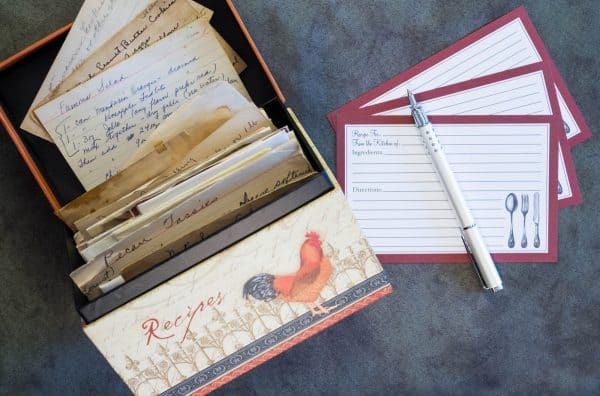
Part of any successful meal plan is to gather your recipes. Take out any cookbooks, binders, recipe keepers or list of favorite meals.
Having these handy while planning your menu will help you come up with meal ideas and ensure that you accurately list all ingredients needed.
One thing to remember as a meal planning beginner is to keep it simple until it’s routine. The easier and quicker a meal is to make, the more likely you’re going to get it done successfully.
If you start planning complicated meals with lots of ingredients, there’s an increased chance you’ll give up and fail.
6. Fill In Your Meal Plan
Using your list of items on hand, your recipes, and your list of favorite meals, start writing down your meals on the days that you plan to cook them.
If the plan is to have Fish Tacos on Tuesday and Teriyaki Chicken with Rice and Steamed Vegetables on Thursday, that’s all you need to write down.
If the plan is to have Fried Chicken, Mashed Potatoes, Corn on the Cob, and Salad on Friday, make sure you write it all down.
Don’t forget the days that will be difficult to prepare a meal. Even if your plan is to eat takeout, write it down on the meal plan.
Make notes at the bottom of each day if there’s anything you need to do to prepare for the following day. For example, if you’re using a frozen chicken for Friday’s dinner, you’ll need to take it out Thursday night to thaw.
Writing these types of notes on your menu plan will increase your chance for success.
7. Write Your Grocery List
Every step of this meal planning tutorial is important, but this one is a biggie for beginners and pros alike. Write a shopping list.
Using your weekly menu and recipes, make a list of the groceries you’ll need to buy to complete each meal. Leave out the ingredients you already have.
Group the groceries with similar items. Green onions grouped with potatoes, ground beef grouped with salmon, flour grouped with oil, etc.
Think those items aren’t all that similar? Think about where they’re located in the grocery store.
Arranging your grocery list based on the layout of your local grocery store will help you get your shopping done much more quickly and efficiently. It’ll also help you avoid the impulse buy aisles because there’ll be some aisles you don’t even need to walk down.
8. Do Your Grocery Shopping
Time for the grocery shopping portion. Make sure you bring your shopping list because nothing derails a weekly menu faster than not having the appropriate ingredients.
Since you’ve laid your shopping list out according to the grocery store layout, pick the place you’re going to start.
My local grocery store is laid out with the produce on one side of the store, and the bakery and deli on the other side. The fresh seafood, meats, and dairy are located across the back of the store. Everything else is located in the middle aisles.
I typically start on the aisles next to the bakery, work my way through the middle aisles that I need, then go through the produce section, pick up any fresh seafood, meat, or dairy and finish off with the bakery aisle.
Grocery shopping is my least favorite part of meal planning, but I’m too picky to let the grocery store clerk pick out my meats and produce.
I will admit that as I get busier, it’s starting to sound better and better. Who knows, maybe someday I’ll try it out.
Related Articles:
9. Prep As Much As Possible
Once you return from grocery shopping, prep as much of the food as possible to help save you time during the week.
Then wash and chop vegetables, break down bulk meats into smaller packages, precook any dishes or portions of dishes that will keep, and pre-assemble any freezer or dump dinners.
Now that your planning, shopping, and initial preparations are done, you’ll have a much easier less stressful time getting meals on the table.
Here are some additional tips not covered in the tutorial that might help.
Tips to Meal Planning for Beginners
No meal planning tutorial for beginners would be complete without giving some tips to ensure success, so here they are.
Set Up Your System
- Make a master list of favorite meals
- Even though your favorite recipes are probably stored in your head, keep a written master list. This way you don’t forget about them when you’re meal planning
- Keep written or digital recipes
- Written recipes in a binder or smartphone app give you a visual reference of all required ingredients and eliminate the need for additional trips to the grocery store
Do Your Research
- Know what you already have
- Always check your pantry and freezer for items you already have on hand because it saves you from having to throw away expired food
- Check store ads
- Plan your meals around the best sale items from your local grocery store
- Use foods that are in season
- Fruits and vegetables are cheaper and taste better when they are in season
Create Your Menu
- Start Small
- Plan simple meals with fewer ingredients
- Plan only one meal a day for the first week or two and add the others as you settle into a routine
- Keep it simple
- Avoid recipes with too many ingredients, too many steps, or fancy ingredients that you’ll never use again
- Use bulk meats
- Bulk meats are generally cheaper and you can get several meals out of one package of bulk meat. You can break the bulk meat into smaller packages and freeze it or use it to create freezer meals
- Make extra portions and freeze
- Making lasagna for dinner? Why not make two and freeze one for a later date.
Meal Planning for Beginners Assignment
That’s it, the whole enchilada Meal Planning Tutorial For Beginners. Now get busy and give it a try.
Do you have some steps or tips I forgot to mention here? Please pop them into the comments below.
Struggling with any steps, let me know and we’ll figure out how to get you through them.
Meal Planning Options
Still not convinced that you’ll be able to pull off meal planning, check out the $5 Meal Plan
- Erin offers two different ways to use her service
- You can get a pre-planned weekly menu and shopping list for five dinners. It also includes one breakfast, and one lunch delivered directly to your email
- You use her drag and drop Meal Plan Builder to build your own plan that will come with a shopping list
Looking something even easier, check out these meal delivery service companies. They all deliver pre-portioned fresh ingredients and recipes straight to your doorstep.

